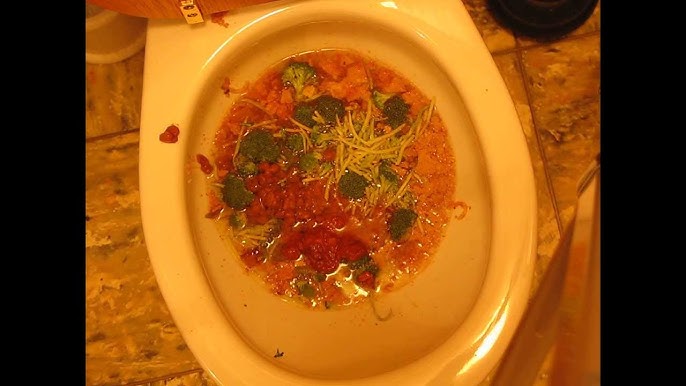Are You Permitted to Flush Food in the Toilet?
Are You Permitted to Flush Food in the Toilet?
Blog Article
Every person is bound to have their private way of thinking in relation to Is it safe to flush food (especially rice) down the toilet?.

Introduction
Many people are typically confronted with the predicament of what to do with food waste, specifically when it comes to leftovers or scraps. One common inquiry that emerges is whether it's fine to flush food down the toilet. In this short article, we'll explore the reasons that people may consider flushing food, the repercussions of doing so, and alternative approaches for appropriate disposal.
Reasons that people might take into consideration flushing food
Lack of awareness
Some individuals may not recognize the potential damage brought on by purging food down the commode. They might mistakenly believe that it's a harmless practice.
Comfort
Purging food down the toilet might feel like a fast and easy service to taking care of unwanted scraps, particularly when there's no close-by garbage can readily available.
Laziness
Sometimes, people may simply choose to flush food out of sheer negligence, without taking into consideration the effects of their actions.
Effects of flushing food down the bathroom
Environmental effect
Food waste that winds up in waterways can contribute to air pollution and harm water environments. Additionally, the water used to flush food can strain water resources.
Plumbing problems
Flushing food can result in clogged up pipelines and drains, triggering expensive plumbing repairs and aggravations.
Types of food that should not be purged
Fibrous foods
Foods with fibrous appearances such as celery or corn husks can obtain tangled in pipes and trigger obstructions.
Starchy foods
Starchy foods like pasta and rice can take in water and swell, causing clogs in pipelines.
Oils and fats
Greasy foods like bacon or cooking oils should never ever be purged down the commode as they can strengthen and create clogs.
Correct disposal methods for food waste
Using a waste disposal unit
For homes furnished with waste disposal unit, food scraps can be ground up and flushed via the pipes system. However, not all foods appropriate for disposal in this manner.
Recycling
Particular food product packaging materials can be recycled, reducing waste and decreasing ecological impact.
Composting
Composting is an environment-friendly means to get rid of food waste. Organic materials can be composted and used to enrich dirt for horticulture.
The value of appropriate waste monitoring
Lowering environmental harm
Appropriate waste management techniques, such as composting and recycling, assistance minimize contamination and preserve natural deposits for future generations.
Safeguarding pipes systems
By staying clear of the method of flushing food down the bathroom, homeowners can stop expensive pipes repair work and preserve the honesty of their pipes systems.
Verdict
Finally, while it may be tempting to purge food down the commode for ease, it is essential to understand the prospective consequences of this activity. By adopting appropriate waste monitoring techniques and getting rid of food waste properly, individuals can add to much healthier pipes systems and a cleaner environment for all.
FLUSH FOOD DOWN THE TOILET?
FLUSHING FOOD CAN CAUSE BLOCKED DRAINS IN YOUR HOME
All of the plumbing fixtures in your home are connected to the same sewer pipe outside of your home. This outdoor sewer pipe is responsible for transporting all the wastewater from your home to the Council sewer mains. Even small pieces of food that go down the kitchen sink can cause problems for your sewer. It should therefore be obvious that flushing larger bits of food, such as meat, risks a clog in either the toilet itself or the sewer pipes. Flushing greasy food is even more problematic because oil coagulates when it cools, coating the interior lining of your pipes.
THE TOILET IS NOT A BIN
Food isn’t the only thing that people shouldn’t be flushing down the toilet. People use the toilet to dispose of all kinds of things such as tampons, makeup wipes, dental floss, kitty litter and even underwear. Water goes to great lengths to educate residents about the high costs and stress placed on wastewater treatment systems simply from people flushing the wrong stuff down the toilet. It costs taxpayers millions of dollars each year, and homeowners thousands in blocked drain repairs.
FLUSHING FOOD IS A WASTE OF WATER
Flushing food is a waste of our most precious resource - water. In June this year Level 1 water restrictions were introduced to protect water supply from drought conditions. Much of New South Wales continues to be affected by prolonged drought with recent figures revealing up to 97 per cent of the state remains in drought. Depending on whether you have a single or dual flush toilet, every single flush uses between five and 11 litres of water. In the current climate this is a huge amount of water to be wasting on flushing food that should be placed in the bin (or better yet, the compost).
https://www.jabplumbingsolutions.com.au/blog/can-you-flush-food-down-the-toilet

I found that page on Think Twice Before Flushing Food Down Your Toilet while exploring the web. Are you aware of anybody else who is very much interested in the topic? Take a moment to share it. I thank you for reading our article about .
Schedule Your Job Now Report this page